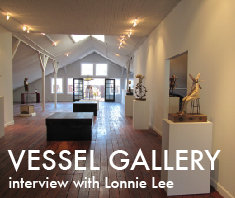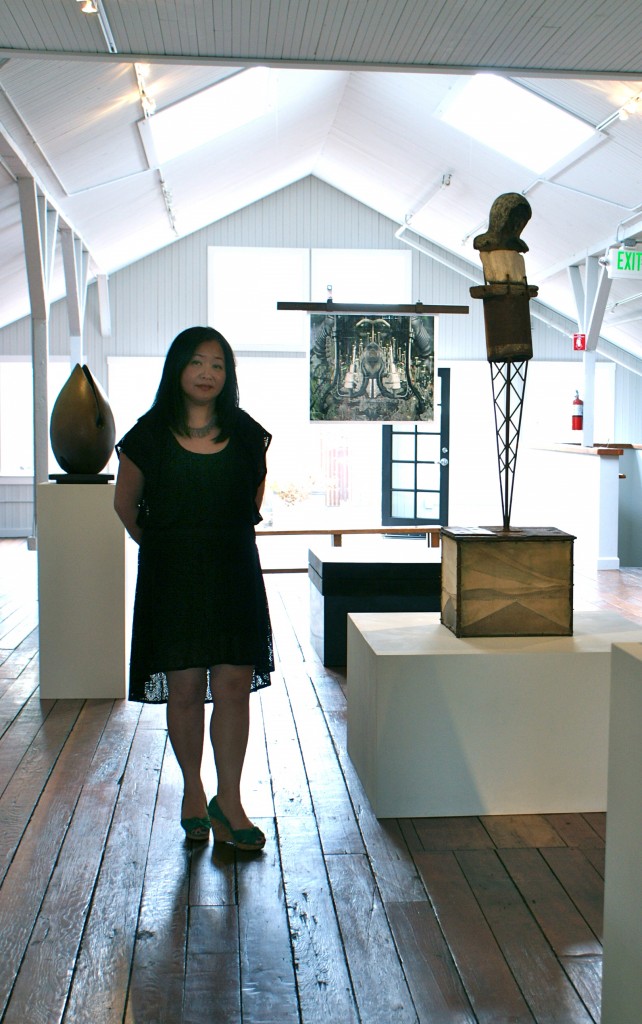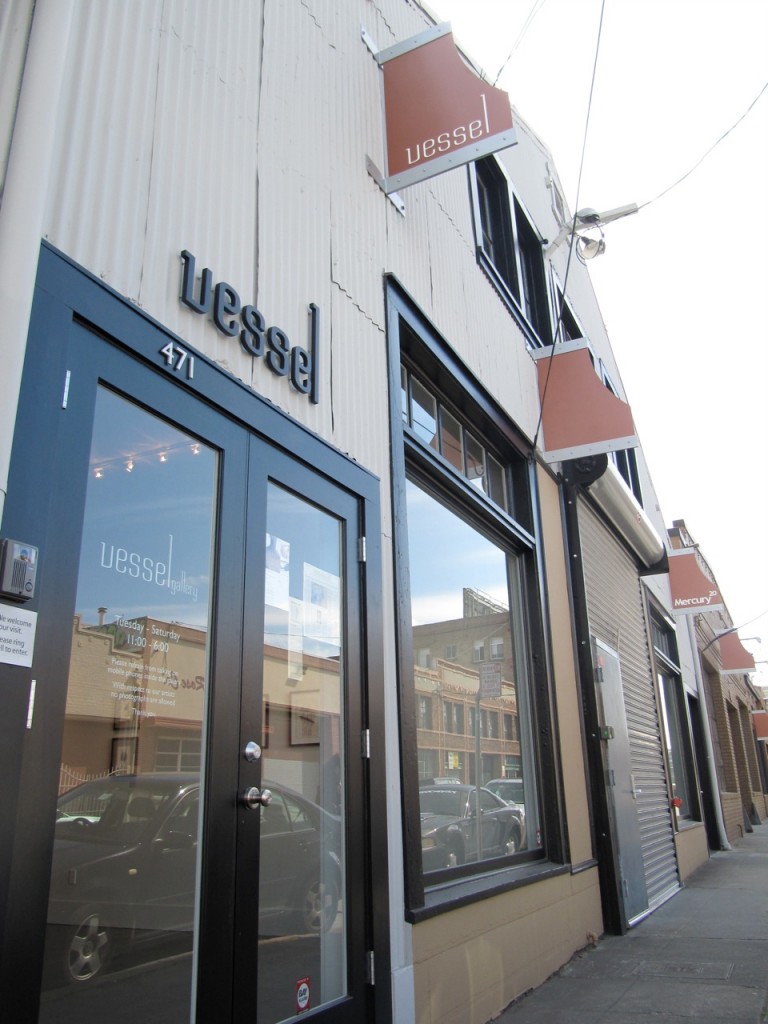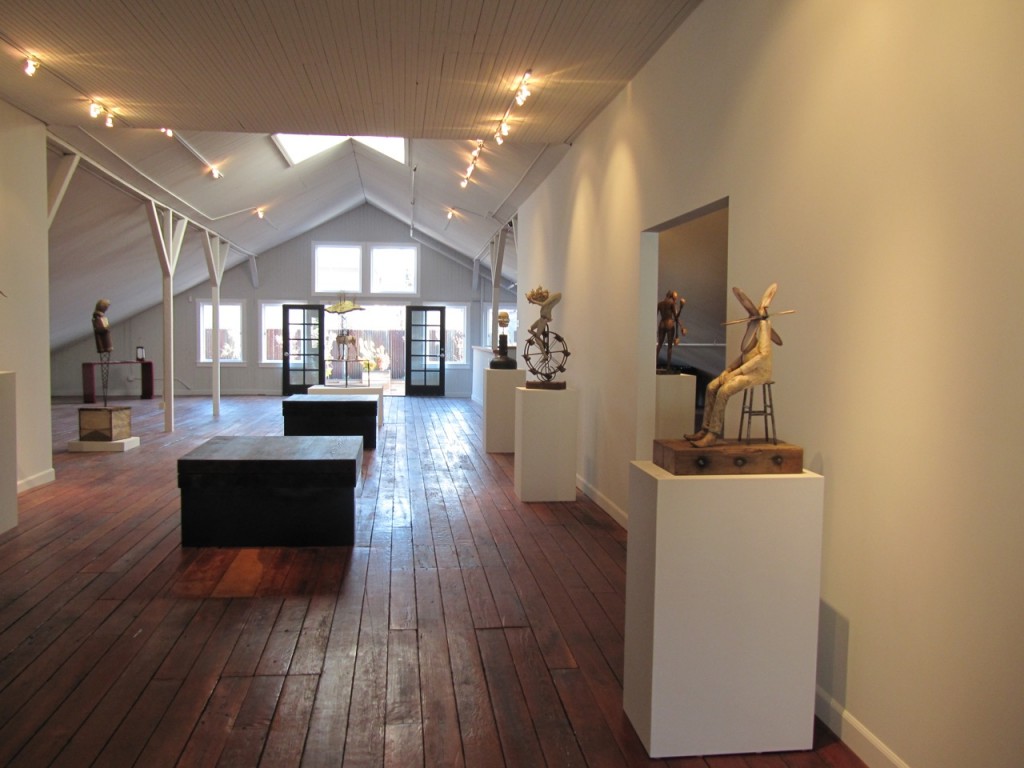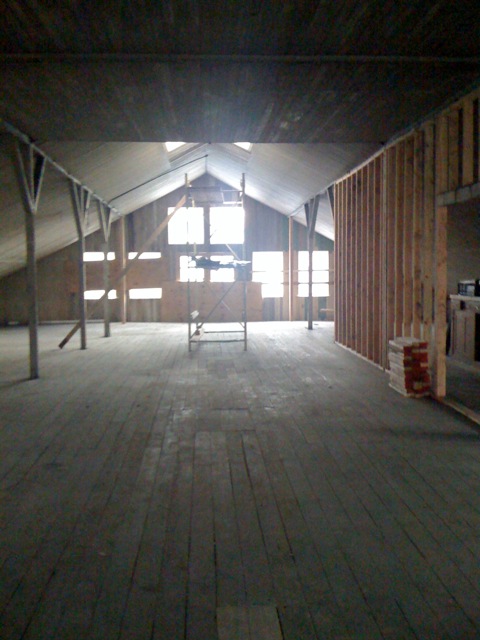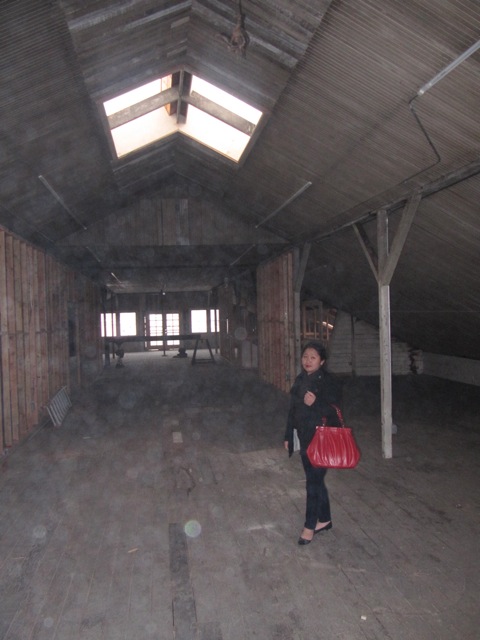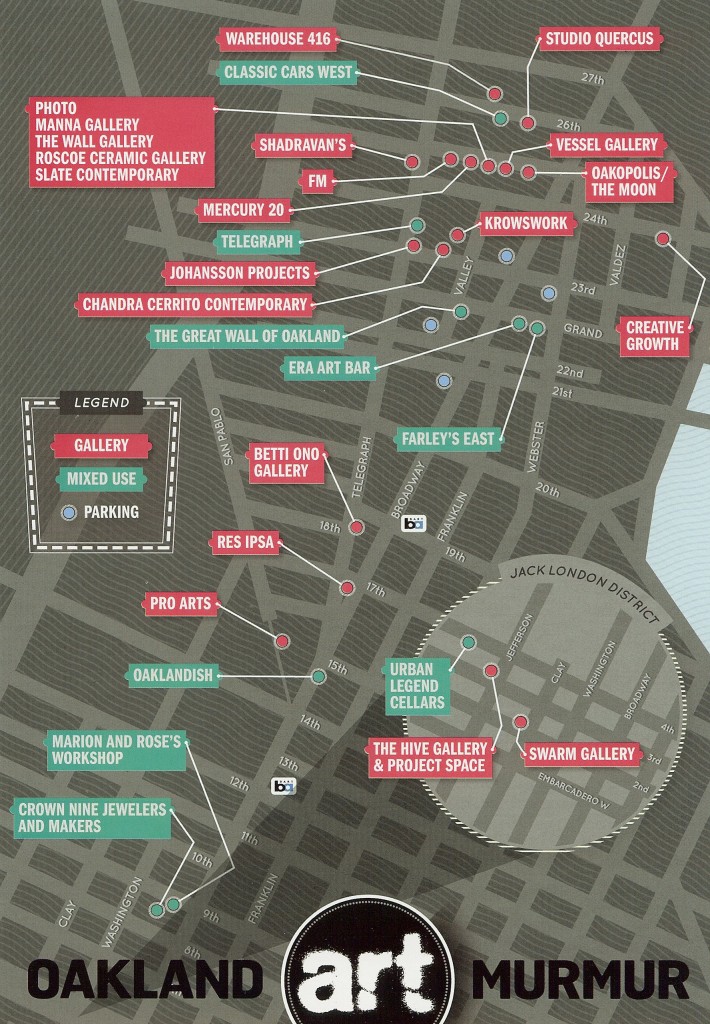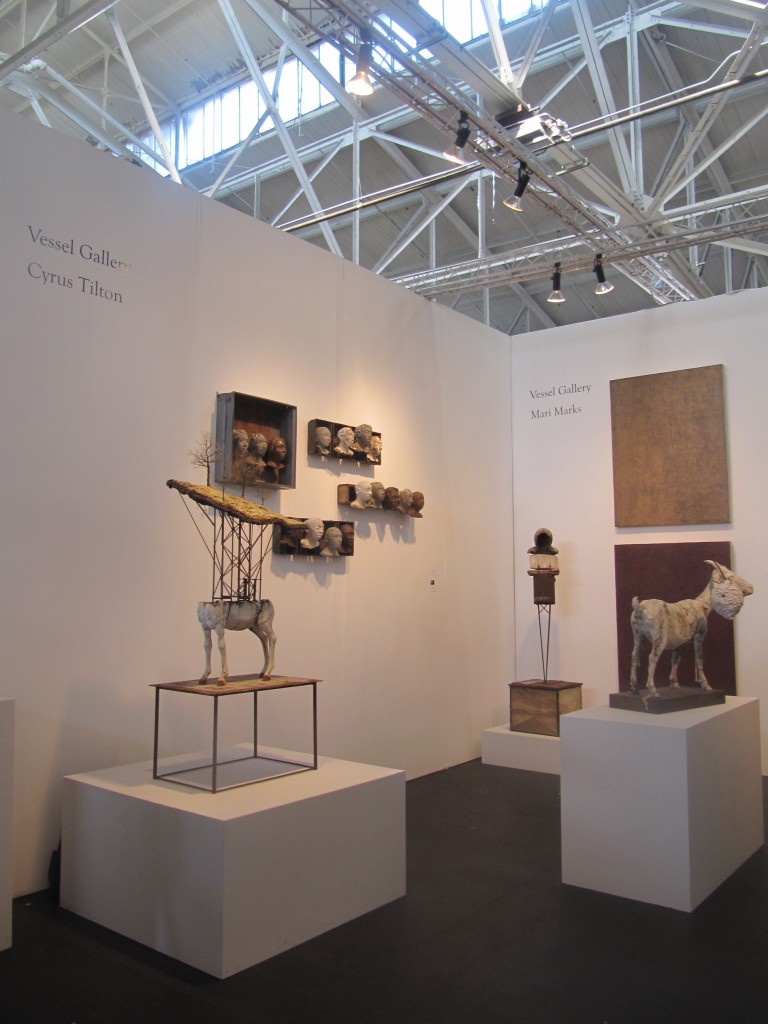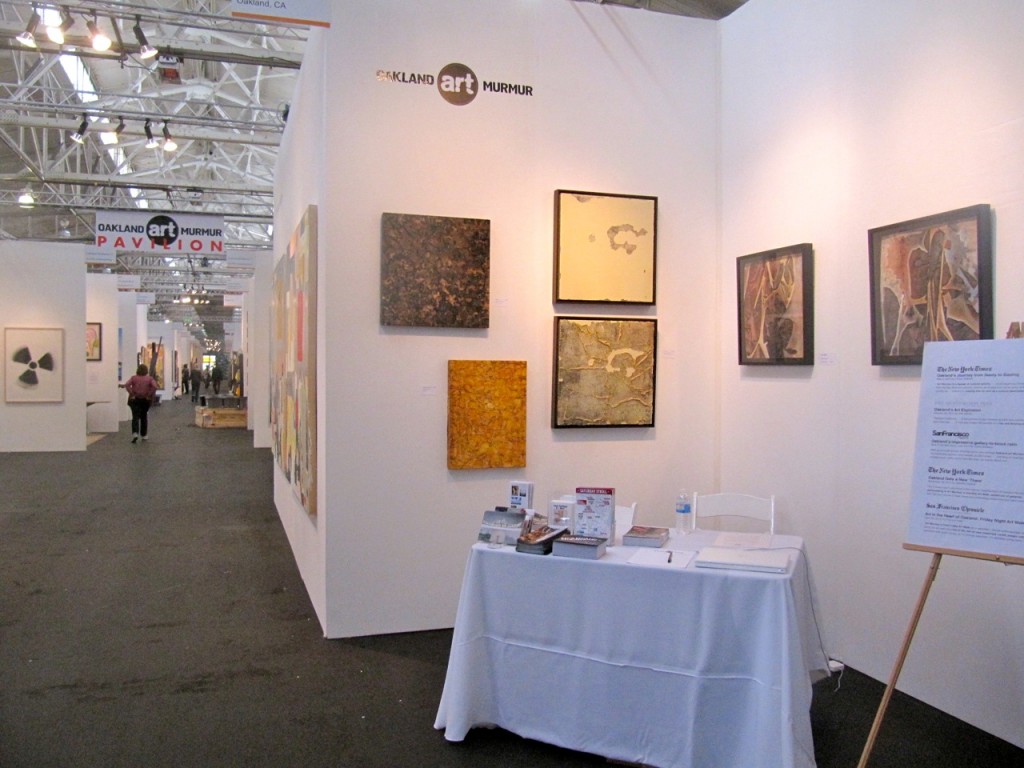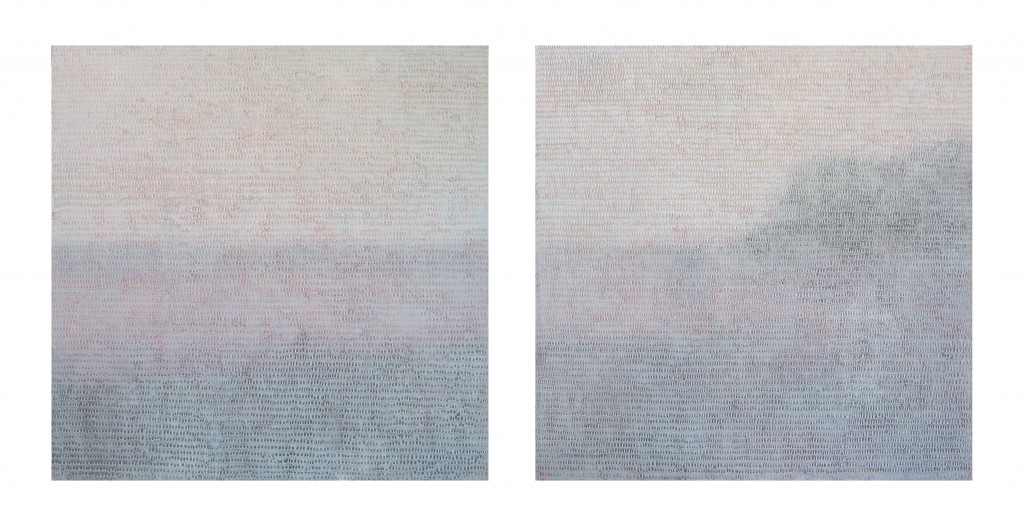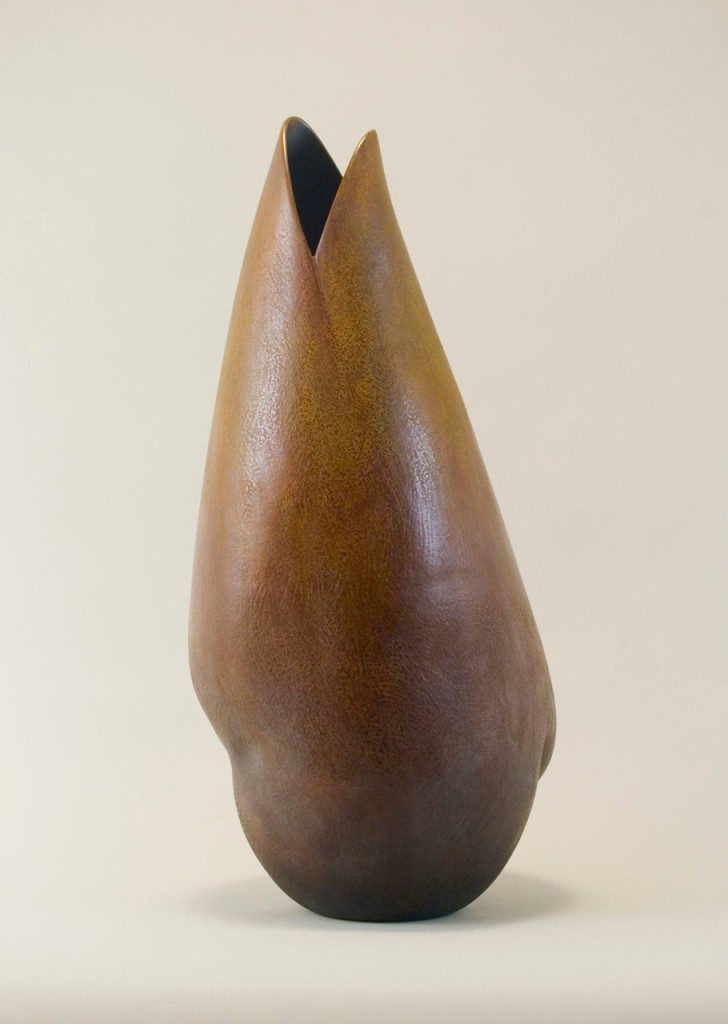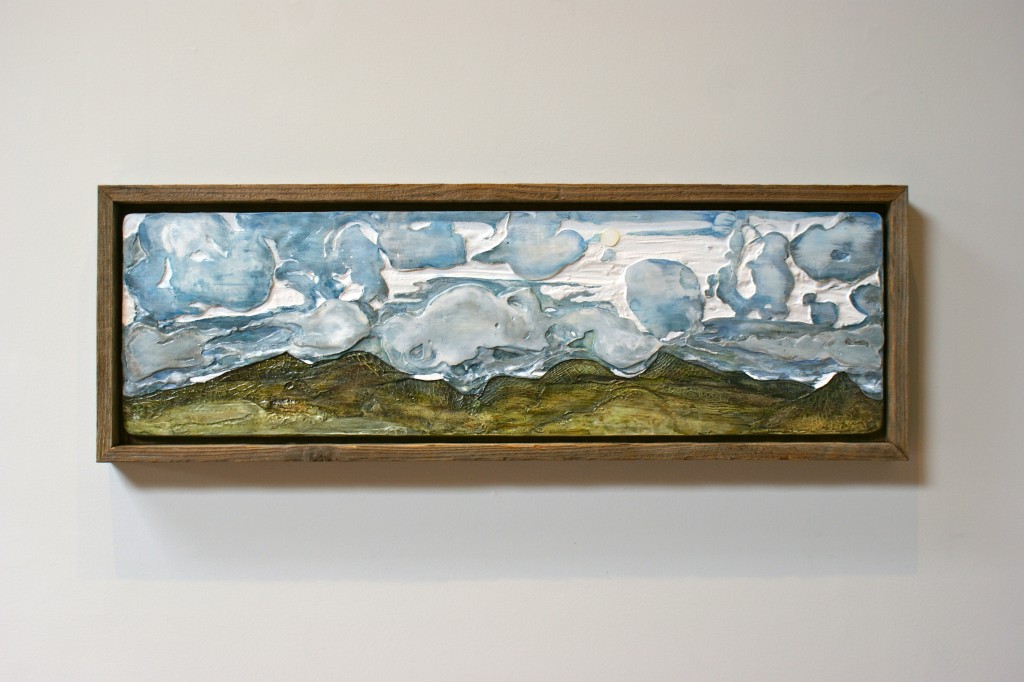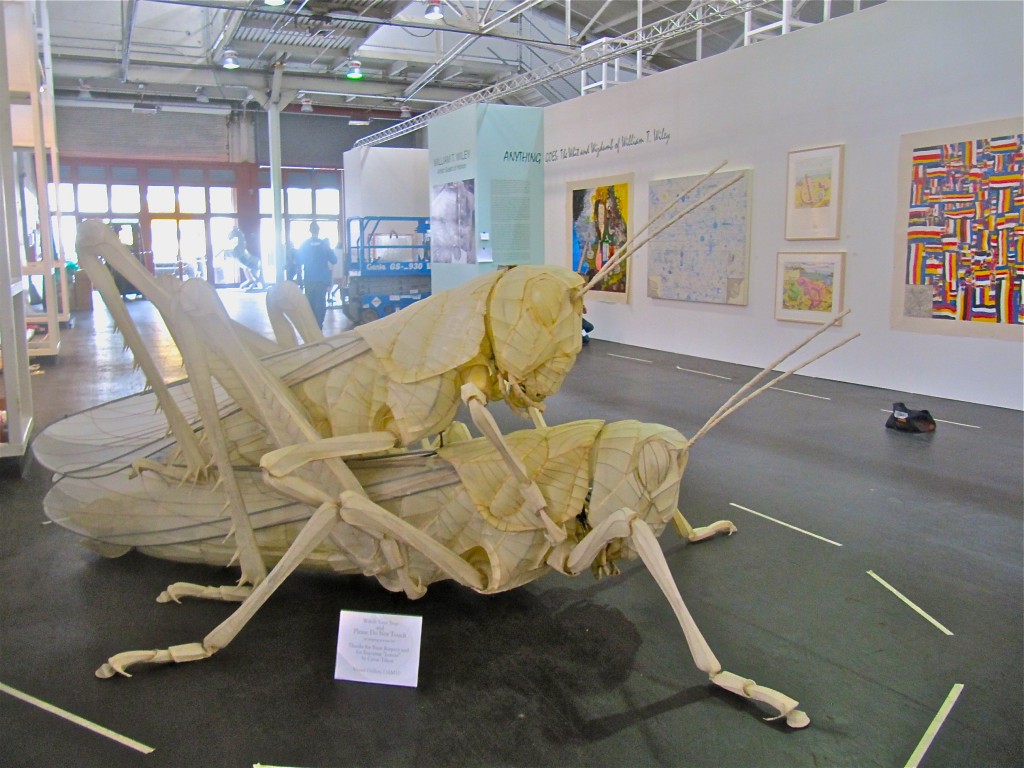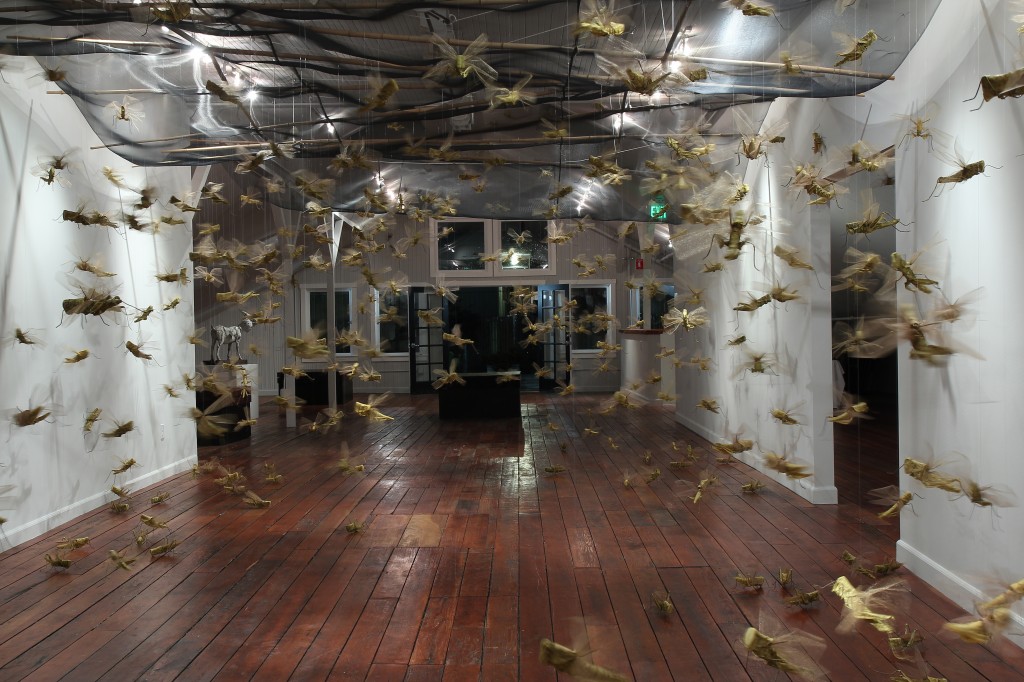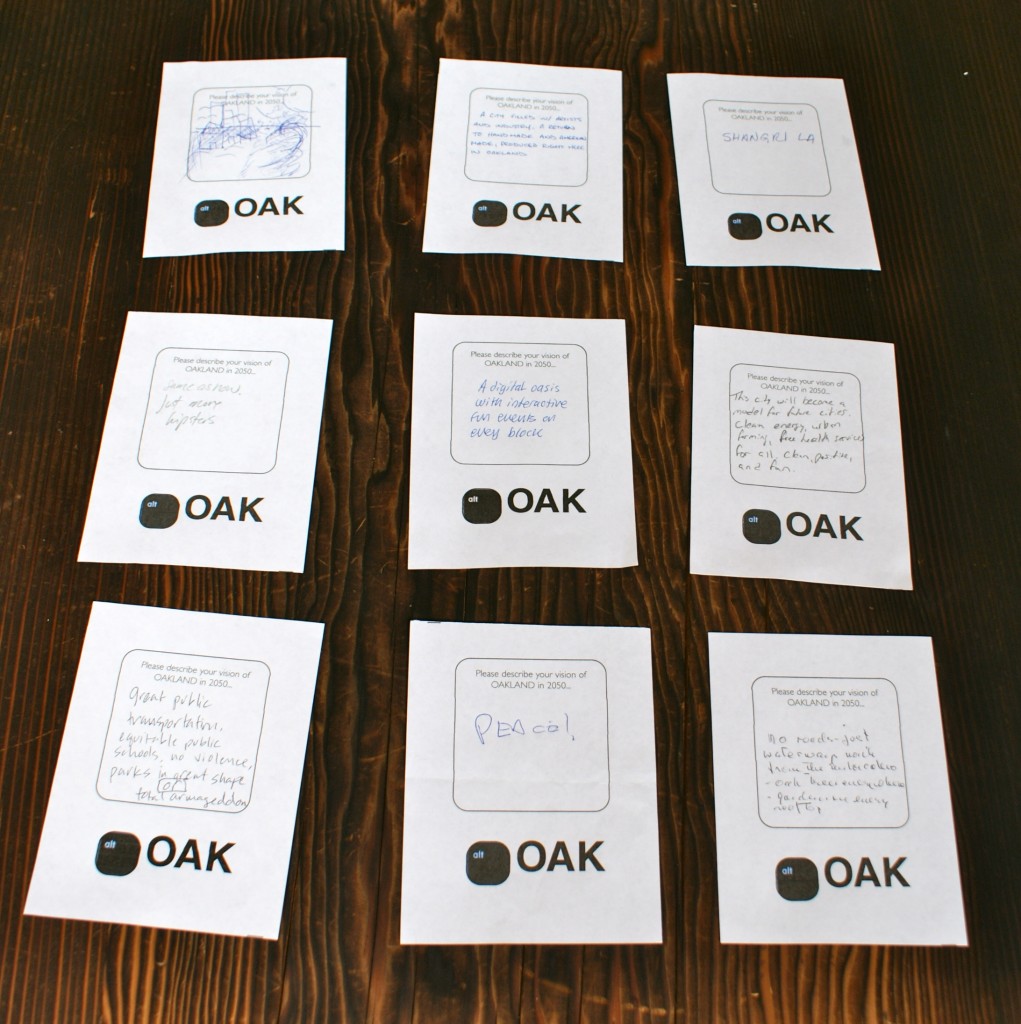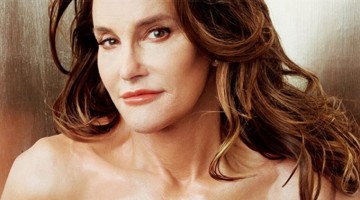In 2010, the second iteration of Vessel Gallery transformed a former horse livery on 25th Street in downtown Oakland into a striking light-filled gallery and event space. A short walk from the Fox Theater, the Paramount Theater, and the 19th Street Bart Station, Vessel showcases the work of over twenty artists and eight art jewelers. As a thirty-year resident of Oakland, Vessel’s owner and curator, Lonnie Lee, is fiercely proud of all that Oakland has to offer and is an active participant in the Oakland Art Murmur. I recently sat down with Lonnie to talk about her background, the evolution of Vessel, and her perspective as a gallerist.
-Kelly Inouye
KI: What is your background? What did you do before Vessel?
LL: Before opening Vessel, I ran a graphic design/visual communications business for over a decade. I serviced many industries: Museums, galleries, Hi- Tech, Venture Capitalists, Fashion, Food, Non-profits, all kinds of clients. I really enjoy people and the variety of work kept things interesting for me. I did a lot of work for organizations that I felt akin to.
Then I had children. I had my first-born, my daughter, and I brought her to the studio with me. I could actually work full time with her. She was a really independent child and could do her own thing and put up with her mom working. I was really productive in those years. I could work a 60-hour week and have her by my side. It was great. Things changed when I had my second child. He clearly told me that wasn’t going to work. I took his clues and read his signs and said to myself, “OK, I can’t do this in the capacity I had been working at before. So I slowly, begrudgingly started letting go. I moved out of my office in San Francisco and into a home office. There was also the possibility of my husband, Ken, transferring his job so we thought maybe it was a good time to transition into a home-based office. Anyway, my client list became shorter and shorter as the demands of motherhood became greater and greater until eventually I found myself not working. Years passed and I was a full time Mom.
My son was five when I realized he was going to go back to school and I needed to get back to work. We were still in Oakland, we had not been transferred anywhere. I did some soul-searching. A fellow mom in one of my mothers’ groups approached me, she is an epidemiologist, and she thought we should get together and do some career coaching. I thought that was a great idea. I reminded her that I came from the design spectrum of industry. She had done some professional career coaching with an agency and they had suggested she find a partner. I found myself realizing that after ten plus years, I wasn’t really as inspired as I was after college. Basically I knew what worked and I was operating by that method. I really wanted to get re-inspired, but I also had to make a living.
I ended up considering going back to school to pursue a different career path. I thought about video editing because I minored in Photography and had always been interested in the sequencing of visuals. I also thought about studying to become an art therapist to work with children in grief counseling. My third option was to open a business: a gallery.
These were long-standing dreams and pursuits I had set aside. Over the course of about a year I basically came to the conclusion that I would invest in a gallery representing some friends that made amazing artwork but didn’t necessarily know how to get it out there to the world. I thought I could be that person. I had not been making my own art for many years. I thought opening a gallery was a great way for me to draw from my skillset, pull together my interests, hopefully make a living, and get back to work.
In 2004 I opened Vessel in Berkeley. Through that effort I wanted to bring together my knowledge of art and interior design, and bring that synthesis forward. My focus the whole time was showing my artists and promoting their work. At Vessel in Berkeley I showed artists who made jewelry, custom furniture, fine art, and some fine craft. I was there for five and a half years and gained a really great clientele base. While I was in that 500 square foot modest space over on Ashby by the Claremont Hotel, I started thinking about occupying a larger space. Then the economy tanked. I thought this was the perfect time to open that second space.
However, I quickly realized that operating two spaces was going to require an amount of energy that I didn’t realistically have as a mother of two. I polled my clients and told them I was thinking of closing and relocating and asked them where they’d want me to be. Everyone said Berkeley, of course. But In my heart I knew I wanted to be home. Home has been Oakland for thirty years. During this complex time, I was seeking to simplify and localize my life. My son was going to an Oakland Unified School District school; my daughter commutes to San Francisco for school. I’d lived in Oakland for all these years. It’s not really that far, but it was far enough and I wanted a simpler life. I wanted to ride my bike to work. It sounds really small. But small things lead to great things and I was really looking for a way to reduce stress and simplify our lives as a family.
So I closed the doors and I searched everywhere. I enlisted friends, I rode my bike everywhere, I scanned the streets, I checked out all kinds of places. As a result of that process I knew I wanted to be here even more. I knew I would be disappointing some of my clients but I was hoping they would follow, and they have. I am really pleased about that.
How did you end up in this space?
I ended up here on 25th street because I responded to a little sign in the window. This block and this building didn’t look anything like it does today. I was looking at more highly trafficked areas downtown but they had to be interesting. My requirement was that it had to be a compelling space. I saw this space and well, it didn’t look like this. For example that back wall there was covered with plastic held up by two by fours and the wind blew in and out. It was in terrible disarray. There was a hole in the floor right here just beyond that wall and over there was another hole with a makeshift ladder. The staircases weren’t here but I walked up and totally fell in love. The way the light penetrated the space and the feeling that I got was one of excitement. I brought everyone here; my family, my kids, my clients and my artists. Everyone looked at me and questioned whether I was serious. I said, “Yes, I am serious.” And they saw my seriousness and they were really concerned for me, with good intentions, of course. They weren’t seeing it.
In spite of the disrepair it was beautiful to me. Its bones were just really true to its original purpose; it was built as a horse livery in 1906. I kept thinking about it. I had some architectural plans done on another space and was thinking of moving in there, but I could not stop thinking about this space. One day, months later, my daughter who was 16 at the time said, “Mom, I don’t understand why you keep asking for validation. You know where you want to be.”
Wow. That’s pretty insightful.
Yeah- and I just internalized her words. I knew she was right. She didn’t say anything else about it. I realized that I kept asking everyone to give me permission. I finally decided to listen to myself. So I signed the paperwork and started working on this space. All of that happened over the course of a year, I closed my doors in Berkeley and opened here on 25th Street in Oakland in 2010. It has been quite a journey and an evolution of discovery: not only of the space, but of myself, too. And what was exciting was when I started bringing everyone back they were in disbelief at what I had done. That was really fun. Finally they could see it. Even the artists I represent who I thought would surely get it didn’t. No one did. But it turned out to be a great discovery and journey. I’m really happy to be here.
I have to add that I wouldn’t be here without the support of the landlords. Matt Iglehart, whose family owns fourteen buildings here on 24th and 25th streets, they ran a family business. I saw that his family operated their glass business for seventy years here. That entrepreneurial spirit and that legacy is something I just connected to on a very visceral immediate level. I grew up with my family’s business; I come from a family of entrepreneurs. Growing up I saw hard work, and that work ethic is something that I bring to the table in every pursuit I take on. We didn’t talk about it, I just felt it. I felt it in the space; I felt it in who Matt was. Matt studied ceramics at Colorado University in Boulder, which is where I went to school but we didn’t know each other. There were just all these similarities. Sometimes you just act on feeling and this place is a result of that instinctual impulse. They asked me what I wanted, what I saw, and together we invested in the remodeling of the space.
How long did the remodeling take?
The renovations took five or six months. And we didn’t do anything crazy, my intent with the space was really to retain its inherent character. I didn’t want to bastardize it. It was great as it was. We put up walls and the architect had to get everything up to code and whatnot. Putting up walls so we could actually show some 2d work is helpful if you’re going to have a gallery (laughter).
Can you talk a little more about your reasons for becoming a gallerist and curator?
Well, human beings are built with collective experiences. When I think about my childhood, I was always drawing. I was very lucky in that I went to high school at a time when trades were valued. My school offered classes like Home Economics, which I didn’t take, but it was valued. I took architectural drawing and mechanical drawing. I was always one of two girls in these classes. And I always took art. Those were my college prep electives. Drawing is something that I did naturally.
In college I set off to pursue architecture. I was very interested in the act of drawing and conceptualizing and problem solving, but I wasn’t very interested in the engineering and mechanics of it. Unfortunately I fell into a department where the mechanics and engineering were valued more than the conceptualizing and drawing that I enjoyed. So I quickly divorced myself from the notion of becoming an architect. I was too young and I wasn’t in the right institution to learn what I wanted to learn. I also came from an immigrant family. They were not very understanding of my pursuit of Fine Art. They wondered what I was going to do with that and always posed those questions to me. And of course I couldn’t answer (laughter).
In my pursuit of acceptance I changed my major. I thought graphic design was a good compromise. I could still be creative and problem solve for other people. Also, at such a young age I didn’t have a whole lot to say with my art. That was very important to me. I could see that the art I connected to had some sort of message. I didn’t need to elicit anything at that time in my life. I was really too young and had too few experiences to put into my art.
As far as reasons for becoming a curator, I looked at this collection of experiences and questions I was interested in: How do I create a compelling space? How can I bring together messages with artwork in a show? What is an artist saying? How can I reveal that through a show? It was really a confluence of those factors. And I wasn’t making my own work, nothing I wanted to show anyway. But other people were making fantastic work and I wanted to be a part of that.
The visual arts, the performing arts, the literary arts are lead ins / they’re barometers of our societal culture and vehicles of expression to what is on and what occupies our collective conscience. So I consider it my job as a curator, and as a gallerist to make sure we’re bringing these notions forward, to make sure we’re revealing these significant commonalities and sociological concerns. In doing so, I select artists who are mavens of these visions, whether they’re aware of their participation of this or not, reflection and connection to our audiences with this intent is key.
More often than not, when a viewer says to me “this has been on my mind too,” or “I relate to this notion,” or “we were just talking about this,” or “this artist really expresses my own feelings,” or “I never thought of this in this way but I now understand”….then I feel we’ve done our job in connecting our audience with our artists, and that we’ve taken the work to its purpose. You can’t pay me to do this work, when that moment happens – it is the most satisfying experience that I can receive from the work I do. I cherish my job at those exact moments and when I get to deliver stories that connect individuals/audiences/viewers/humanity to my artists, that is so gratifying. It is like a parent watching their baby take it’s first steps, or observing the elation of a young adult graduate high school, or witnessing someone achieve their dreams – it is exhilarating to see such completion. I am honored each and every time that happens and I get to participate in that magical moment. It is life giving. Also, to give energy to my artists to continue working and creating, is satisfying. This is fulfilling.
I’d like to change course and talk about your experience in Oakland, in particular. As a thirty year resident of Oakland I’d love to hear your thoughts on the artistic community here, specifically recent events like the Oakland Art Murmur and the Occupy protests.
I migrated here thirty years ago with my family. We are very close and we moved from the Chicago area to the Bay Area together. My siblings had started their young families, my mom was retired, but what was essential was that we were together. So they transferred their work and we all moved together. Not a lot of families do that, but we did. We came out here and loved it. My husband is a third generation native of Oakland, I met him a few years after we moved. When I met him I remember being excited about the fact that he was born here. I remember saying, “I love Oakland!” and he looked at me as if to say, “Whatever. What’s the excitement about?” We developed that conversation later, of course (laughter). But my affinity for Oakland was instant, and I haven’t fallen out of love with it. Like any relationship, you know, you go through rough times and you come back and you know what its strengths are.
I know that Oakland’s strengths are its beautiful diversity, and I’m not talking about just racial diversity but socio-economic diversity and diversity in terms of lifestyle, too. It is rich here. It is truly a melting pot full of all kinds of people who make it a very special place. So I love Oakland. That was another reason I wanted to be here. If I’m going to pay taxes through a business, why not put that money towards my own city? I’ll just say that I’m invested emotionally and tangibly, in a really physical sort of way. I’ve always loved and celebrated it. Of course we have our shortcomings, nothing is perfect. But things seem fragile right now. In a fractured world Oakland seems to emanate a strength- I hope it’s strength of perseverance.
We have creative people opening new businesses without a whole lot of help because the city has cut a lot of its economic development funds. People are still doing it, and they’re doing it on a dime. They’re doing it with creativity as their asset. I think that is incredible. It’s exciting to be part of such a great renaissance because after living here for so many years, it hasn’t ever been this way. Much like the space I found here, Oakland didn’t look the way it does now either. I think its very exciting. I applaud every effort out there from a bakery that may be going in, to the mom and pop grocer, these are services the community needs. I think people are rallying around each other.
As for the Oakland Art Murmur, we have all kinds of art spaces happening here. In the Oakland Art Murmur’s inception in 2006, it was a very grass roots exciting, collective group of people who wanted to coordinate their efforts towards showing their artists work. Everyone collectively getting together with one intention: To raise the level of awareness of the Visual Arts here. That’s so exciting. To me, that spirit and mission is really essential to carry on. In 2010, when I joined, it was still very grass roots and it has grown in a lot of ways.
OAM has grown in numbers of members, it has grown in numbers of attendees, and the diversity of attendees and people visiting our district has grown. These streets are flooded with people. In the summer months we’ve reached 10,000 people. That’s insanity. I am excited by that- to see the streets elbow to elbow. It’s all a result of people wanting to get together. Some people are into the party, but no matter the reason people come to the Murmur there is always a thread of representing the visual arts. It’s a spectacle out on the street. You see street performers, crafters; you see all kinds of things happening.
I have to be here, I’m showing the work. I’m excited to promote my artists. I’m excited for people to see what my artists are doing. I show Oakland artists as well as international artists. I like to show the range of what’s being created in the visual arts and that includes emerging artists next to artists who have worked for ten, twenty, thirty, forty years. There’s a lot to learn from each other’s audiences and each other’s work and I think that’s exciting.
OAM has taken steps towards growing and maturing in the way it organizes and operates. With growth comes learning. This last year has been a year of organization, expansion, and partnerships. Our organization is learning how to operate as a structured organization. We have sponsors now and we are learning how those pieces work together. It is important during times of growth to ask critical question and make sure we are upholding our mission. OAM’s core mission is to support art and cultural venues that are dedicated to increasing popular awareness of and participation in the arts of Oakland. We promote the arts community through collective marketing and outreach efforts and organize the monthly Art Murmur, which is free and open to the public. That’s our mission and we’re doing that. We’re learning, but we’re still doing that. Danielle Fox is doing a great job; she’s our Executive Director. Prior to that, Tina Dillman, was our Executive Director. She was the one who formalized the organization and achieved non-profit status. She worked with Rock Paper Scissors and organized the crafters and got our permit and insurance. She really got the structure going, then she went back to grad school and Danielle took over. Since then we’ve expanded our parameters and included more galleries.
For me personally I think it is essential that we keep supporting the diversity of organizations putting forth a range of programming. Oakland’s diversity is to me our greatest asset, and it really makes us distinctive; its what we can celebrate and tout. That characteristic of diversity creates a openness that keeps us from becoming static, and beholden to certain traditions, and that can refer to the root of the creative work at hand, or it can refer to methods of operation of a gallery or artist space. We are not beholden to certain ways of doing things. This to me is the wild west of the visual arts scene. No other place CA is as exciting and innovative as Oakland, as far as I am concerned.
Vessel participated in the SF Fine Art Fair and a mini-Oakland Art Murmur was staged there, too?
Yes, we actually brought a mini-Oakland Art Murmur to Fort Mason. It was quite a spectacle. It happened during the opening on May 17th.
Is the type of inclusivity you’re talking about in your programming exemplified by the fact that you show jewelry and craft along with fine art? Can you elaborate on that?
To me, jewelry is miniature sculpture. I subscribe to the Eastern philosophy that says there is no distinction between craft and art. You just do it. There is a lot of training that goes on behind these traditions. I don’t subscribe to the Western philosophy of having to box things in.
You also show a pretty diverse array of work here at Vessel. What do you look for when selecting artists and work to show?
The number one thing I’m always looking for is an artist who has a distinctive visual language that they’ve developed. Individuality. As a representative and a gallerist I’m looking to reveal a narrative, the narrative of the artist. I want to develop the story, because if you look over time you see a lot of really interesting stories. The visual language of that is an interesting story by itself. You don’t even have to put words to it. It just happens over time. That’s very interesting to me but it takes time. In an age when everything happens instantaneously, news, gossip, contemporary art, everything is at your fingertips. I want to play a part in the Slow Movement of art the way people talk about the Slow Movement of food. I want people to slow down and think if they enjoyed a show last year, that they should go see that same artists work again this year. I want to gauge them whether they are buying work or they are art enthusiasts, or they are just getting inspired, it’s all very important to this process. I want to help build that over time.
So when I look at an artist, I always look at where they came from and ask to see what they used to do in relation to what they are involved in now. If I see a good introduction or a great development or that they are someone I think I can work with over time, that’s the hook. That’s what I’m looking for. How that value gets revealed can take many iterations, but on some level, this is a characteristic that is unintentionally inherently consistent with my eye, hand and heart when selecting work. Materiality of work is also a very strong characteristic in the work I show. I don’t look for what sells, that’s a really tricky road to go down. What really guides my hand and eye is bringing the visual experience back to the visual novel and slowing the viewer down.
I have an immediate visceral response to work that is nature based. On some level, that grounded sensibility, that reverence, that respect, is one that I intuitively connect to. It’s not conscious. It’s just inevitable. I don’t want to pigeonhole myself; it’s just a reflection that I’ve had that other people have noticed, too.
So every artist I show has somehow developed a unique visual language and a real mastery over how they are revealing the materiality of their work. That materiality can be meditative or it can be just a pure connection to the materials they’re using or it can be conceptual; somehow you know that person has spent time in nature. Maybe they grew up in a place like Wyoming or Alaska. Or one of my artists grew up listening to Indian music, his parents were always playing it and it was seeping into his subconscious, revealing a very grounded sense of being in the world. I don’t know if that answers your question, but that’s what I see.
I’m looking at Sanjay Vora’s work, just over there and thinking about his interest in memory, more specifically memory of place. He paints very representationally on canvas, only to cover what he has painted with a veil. He then picks out what his memory was, using his own visual language to reveal that memory is not necessarily complete, and he’s questioning how to evoke that.
Sanjay’s work is concerned with Nature in terms of landscape, and over here Wayne Shafer’s bronze works are very seed, pod, and vessel-like. These are people who are looking at Nature a lot.
Morgania Moore lives in Healdsburg and makes these plaster works that reveal how she is actually observing how these incredible clouds touch the earth there. These are representational works but they’re also highly interpretive.
Cyrus Tilton, who is very cerebral, his notions really provoke a lot of thought, but the basis of his work is the interaction of Society with Nature. Each of these artists has tremendous facility with materials.
What can we look forward to at Vessel in the future?
This year we opened up with a major installation by Beili Liu, a Chinese artist. She took on the space, as did Cyrus late last year in October. Cyrus did the locust swarm. It was incredible. I took Cyrus’ piece Lovers to the SF Fine Art Fair in May. The insects are made using a steel armature with muslin covered with beeswax. They feel like you’re looking at ekto-skeleton- it’s just insane the way they glimmer. It’s very beautiful and eerie.
We’ve also got an amazing installation by Alex Abajian and J.Lin Hsien Kung opening August 1. This duo just finished a residency at The Tacoma Museum of Glass in Washington State. Here’s a link to a video of what was just completed. There’s going to be a herd of these running through the gallery:
http://www.youtube.com/watch?v=q2VRk5b0ZBo
So, we are going to be exhibiting more installation-based work in the future- work that takes on the space itself. Last year Cyrus filled this whole corridor with a swarm of locusts. He created this kinetic armature that moved as a wave. You could walk through, there was a path, and these locusts were surrounding you. We sold each individual locust and donated proceeds to Alameda Food Bank. Cyrus is very interested in questioning human consumption. I’m so excited about his work. He really provokes people to think. His work is exquisite.
That show coupled with Beili Liu’s show, which featured a piece called Stalemate, which was two floating points converging in space. It was spectacular. I am really interested in bringing more installation into our program. I love it when artists take on the space. Though I can’t do such intricate installations for every show, I usually let those installation-based projects stay up for 6 weeks because I just want more people to see the work, which is the result of so much effort. I hope to continue that for Oakland. I also want to continue to bring international artists here so I can introduce Oakland and our attendees, and in turn introduce these artists to Oakland so that we can all grow and learn from each other. We often talk about globalization and I believe in supporting locally for sure, but I also believe that we all grow from seeing what’s going on in other places. Beili Liu was born and raised in China and works in Texas. She also shows a lot in Northern Europe, so she has a unique and interesting global perspective. She’s an interdisciplinary artist, known for her installation work. She tends to use simple materials like wood, cotton, or string and assembles them in a way that retains their purity but is very complex. For example she does these wind drawings with Sumi Ink that use this age old medium applied in a very contemporary way; with an air compressor. She’s blowing ink- it has such beautiful character. She also uses cut paper mounted on wood. Cut paper is a traditional Chinese material. Having recently done two major installations I’m very intrigued by work that responds to our interesting space.
I have something set up for early next year and I’m working on my programming for 2013-14 so I’m making plans for more installation experiences.
Would you say that’s an evolving focus of the gallery?
I’ve never been able to show that type of work and I am responding to the space just as much so – yes, that affects the programming.
Is there anything else you want to mention coming up?
Charting the Waters celebrates eight years of Vessel. Every year we explore a different connotation of the word “vessel”. This year’s anniversary show explores the notion of a vessel as a boat navigating the proverbial waters. Next year we’ll be exploring the notion of vessel as the human form, the year after that will explore the idea of a vessel as a container.
There are surprises, too. I’m really interested in finding out if people are catching on and wanting to see the narrative that develops here in this gallery. I hope that the underpinning is that they don’t really know what will happen next. I like to set up my programming so that it’s inherently different than the last time, that I set up surprises. Now I don’t want validation. I want to provoke thought. Not necessarily in a political way, although there are a group of us getting together in response to Occupy Oakland. We’re interested in taking the conversation somewhere through the visual arts. We’re not interested in going out and marching, we are interested in how artists interpret what they see and what they want to reveal. We took that on and right now we are gathering these surveys from our attendees. We ask people to think about the future, to think about what the world will be like in 2050. We also ask them to describe their vision of Oakland in 2050 and amazingly people want to take on Oakland more than the world.
People fill these out while they’re here and leave them?
Yes, I’ve got a ton. It’s been very interesting. People draw from their individual experiences or respond with humor. It’s varied. I’m interested in giving this to an artist to see how they interpret it.
Thank you so much for talking with me today.
-Kelly Inouye is a San Francisco-based artist and contributor to SFAQ.
